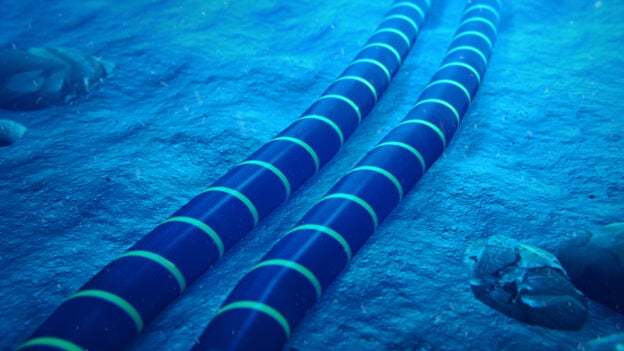Inspenet, October 7, 2023.
Fourteen member nations of the alliance, in collaboration with Sweden, are currently carrying out tests of underwater drones, sensors and the application of artificial intelligence in a 12-day exercise off the coast of Portugal.
The military alliance of the North Atlantic Treaty Organization (NATO) is racing to develop technologies capable of detecting suspicious activities near critical underwater infrastructure in real time, this in response to the explosions that occurred on the Nord Stream pipeline last year, which highlighted the difficulty of monitoring these areas.
This exercise comes at a time when Russia continues to carry out mapping activities on cables and pipelines belonging to NATO members, raising the possibility that they could be targets in the future, according to reports from the Organization.
Notably, NATO has yet to formally file charges against any entity in relation to the explosions that occurred on the Nord Stream pipeline, underscoring the complexity that both governments and private companies face when attempting to attribute such attacks.
The ability to detect these activities in real time ” sends a deterrent message to potential adversaries, whether Russia or other actors ,” said Lieutenant General Hans-Werner Wiermann, who leads the NATO cell in charge of protecting underwater infrastructure . .
If harmful behavior can be identified, this would allow NATO’s 31 member countries to consider diplomatic or military actions based on a “solid information base.” This information would be collected while malicious behavior around underwater infrastructure is occurring and shared with governments and private companies.
For its part, Russia has rejected the first accusations made by some Western countries that point to it as being responsible for the explosions in the Nord Stream. However, concern has grown in recent months due to the presence of suspicious Russian vessels, some of which appear to be spy ships, operating near allied systems.
In May, NATO issued a warning about a significant risk that Moscow could carry out attacks against infrastructure in Europe and North America, especially with the aim of gaining influence over nations that provide support to Ukraine. To carry out this surveillance of critical submarine systems of NATO allies, Russia is using a combination of its navy warships, scientific ships and commercial vessels, such as fishing vessels, container ships and oil tankers, Wiermann said.
Underwater data cables are responsible for carrying out financial transactions worth approximately $10 trillion a day and also handle around 95% of global Internet traffic, NATO reports. Furthermore, about two-thirds of global oil and gas production is extracted at sea or transported by sea. Many of these undersea cable systems have lengths spanning thousands of kilometers and are located at depths of hundreds of meters underwater, making them difficult to monitor and supervise.
In one of the exercises carried out by NATO, member countries attempted to stop a hostile actor who was trying to disrupt data networks and create chaos in financial markets. This actor used a state-backed commercial vessel to make his activities difficult to detect.
Commercial fiber optic sensors that had been installed in the infrastructure cables identified that the fictitious adversary vessel was attempting to deploy an autonomous underwater vehicle. This information was transmitted to the NATO command and control system. Once the threat was corroborated, NATO mobilized a combination of drones, including aerial, surface and underwater, in order to intercept and escort the suspicious vessel.
Highlighting the growing relevance of undersea security, NATO allies reached an agreement in July for the creation of a new maritime center dedicated to critical undersea infrastructure, which would be located at its maritime command in Northwood, United Kingdom. In addition, they agreed to establish a network aimed at improving information sharing between NATO, its allies and the private sector, with the aim of taking agile measures based on intelligence data, such as those collected by sensors or artificial intelligence systems.

